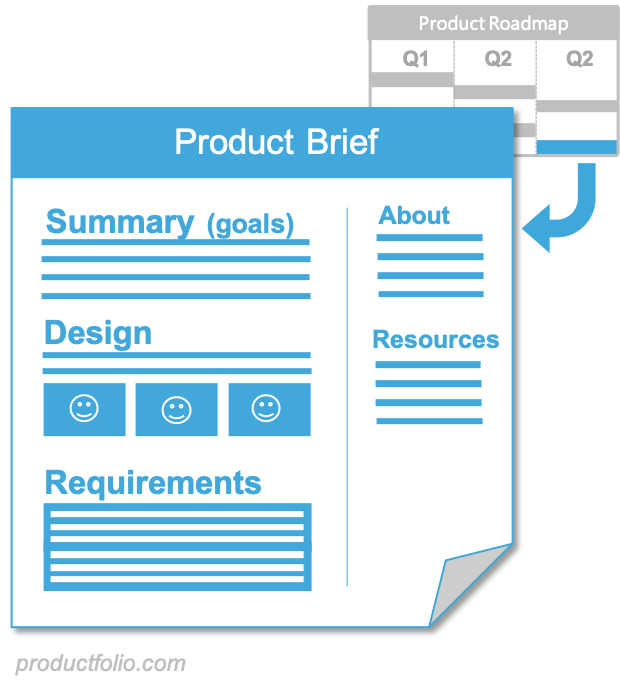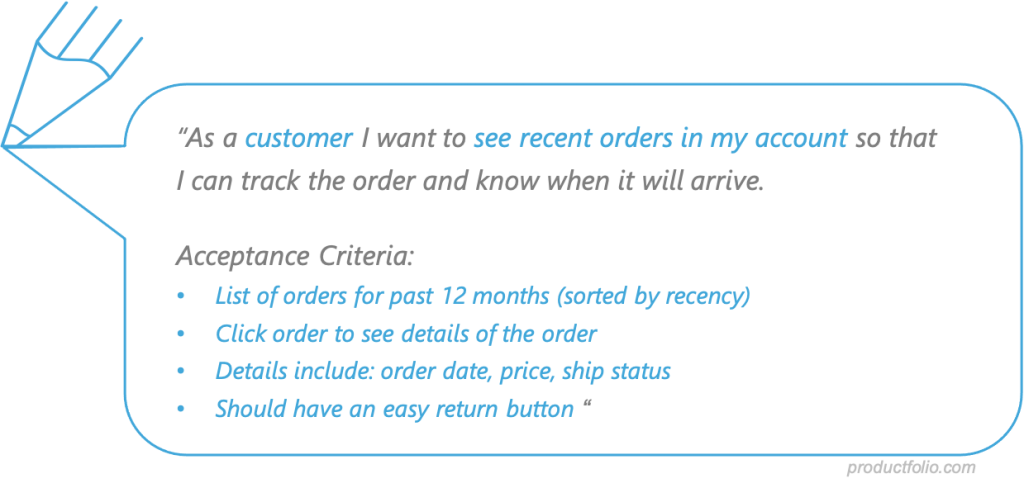What are Product Requirements?
A product requirement is something that Product Management typically creates, providing the outline of acceptable criterial to the design and development team, so they can determine an appropriate solution to the need.
There are multiple types of requirements in development contexts such as business requirements, technical requirements, functional and non-functional requirements. They’re similar insofar as they provide the acceptance criteria for a development team. Product requirements in particular though, are different insofar as they reflect the interests of an external customer for whom the product is being created. They’re also generally written in the form of user stories for this reason (ex: “As a user I want [blank] so that [blank]”).
What is a Product Requirement Document?
A product requirement document (PRD) is typically used in the beginning of a new product or major new feature, before entering into the more iterative cycles of continuous improvement. The PRD is an aggregation of key requirements plus context about the “what & why” of the product to be created. It serves as a guide for the development team to build the product. A PRD contains all details that should be part of a release before it can be regarded as complete.

What is a Backlog?
Product requirements are best understood when placed in the context of a backlog. In Agile methodology, a backlog is a list of prioritized requirements where teams have to ensure the urgent items are completed first. A product backlog often has dynamic requirements which can change frequently based on the period of iterations. As opposed to delivering an entire PRD for a complete product (or feature), tasks can be prioritized and delivered in “iterations” also referred to as sprints which consist of smaller tasks completed in their order of importance.

Iterations are associated with shorter timeframes that can typically last from one to four weeks depending the skills and experience of a team. For teams which aren’t familiar with an Agile environment, one-to-two weeks per iteration is ideal to facilitate a swift change after every iteration.
In an Agile environment, Product Managers handle the Master backlog containing product requirements. As new requirements are identified, analysis is done to clearly define each requirement based on a customer’s viewpoint and recorded into the Product Backlog. Requirements in a Product Backlog are prioritized based on factors such as revenue expectations, market competitiveness as well as alignment with both strategy and stakeholders.
A Product Backlog is often live and ongoing as new items are included while existing items are refined, modified or deleted if they’re no longer required. These changes mean re-prioritization becomes necessary to reflect the actions taken. Since it’s a continuous exercise, Product Managers are always on the lookout to ensure the Product Backlog constantly retains the appropriate set of requirements aligned in the best priority order.
What is a User Story?
A user story is subset or small unit within product development that is aimed at accomplishing a specific goal. Written from a user’s perspective, a user story should describe how users can perform specific actions in order to accomplish certain goals.

In Agile software development, a user story is a brief explanation of features and functionalities based on what users would want to experience in a product. Agile experts and product development teams choose to break down tasks into user stories as they’re simple for anyone to understand and help teams to focus their attention on real people as opposed to abstract features. In addition, user stories consist of small-sized deliverables that can fit into sprints as opposed to complete features. Through user stories, development teams advance through tasks giving them a feel of progress.


